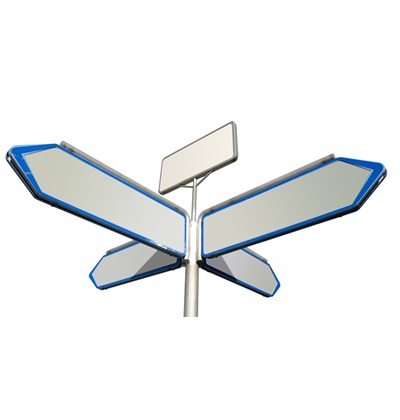HMI navigation
Article#: 00105
Date: 2024-11-02
Author: Radim

HMI (Human Machine Interface) pages should be designed to provide the operator functional groups of related information in a predictable and consistent manner.
The structure should correspond to the operator's mental model of the system and of the process.
Grouping data can be done in a variety of ways.
Following the physical location is usually one of the most effective.
Consider also the work-flow - which tasks are performed most often, and which are seldom used?
Navigational hierarchy should be developed allowing the operator to drill down to greater levels of detail.
For instance, summary pages could lead to more detailed pages on specific equipment or processes.
In addition to the hierarchical structure, we can create links across the structure to reach pages with related information with just one click.
All information and operating elements should be accessible within a maximum of 2 to 3 clicks from the home page.
Always provide a clear way back to previous page.
A clear and consistent backward function (button) prevents confusion, especially when moving between related but hierarchically distant pages, and helps operators avoid feeling lost.
Every visualization page needs a name.
If the visualization is multilingual, it is good if the pages have also a unique numbering next to the name.
This is particularly useful for easier orientation and understanding if the page is displayed in a foreign language and we need to provide support.
Try to optimize the structure and navigation for the user so that it is as efficient as possible.
The design must provide immediate answers to these user's questions:
What page am I on?
What other pages are there?
Where should I go from here?
How do I get back to where I was before?
© Radim-Automation, 2020–2025. All rights reserved.
Sharing of this article is permitted with proper attribution (link to the original page).
Related previous articles:
- HMI layout design
- HMI layout and correct display size
- Choosing an HMI display
- HMI is not a web page
- HMI - Don't overdo it with complex design
- HMI - Have a consistent style
- High Performance HMI
- Graphic designer
- Talk to operators
- Clear signals
- Design considerations for effective HMIS
- Modular software architecture
- Hardware concept
- Design machines with a focus on user's abilities and needs
- Collect all the requirements and sort them!
- Who will operate?
- Functional and intuitive HMI
- HMI and PLC applications should grow together
- More than just start and stop
- Safety first!
- Don't make it worse!
- Introduce the terminology and standardize it!
- Industrial evolution - Listen to your customers and follow new trends!
- Stay alert!
- What does the customer need?
- Don't disappoint your customer!
- Ask questions!
- Check the result!
- Keep it simple!
- Choose the right tool!
- Development is evolution
- Transparency and reliability
- From an idea to a consistent system
Related next articles:
- HMI - back and forward navigation buttons
- HMI – Don’t hide anything
- HMI - annoying pop-up windows
- What makes an HMI intuitive?
Comment#: 00001
Date: 2025-02-18
User: Radim
Why is the hamburger menu not ideal for industrial visualization?
Recently, the hamburger menu has become increasingly common in industrial HMI systems. While this element is widely used in mobile and web applications, it may not be the best choice for industrial visualization.
The main drawback is that it hides important control elements (buttons) and requires an extra click. Users first have to open the menu before selecting the desired function. This reduces efficiency and can be a problem, especially in environments where speed and clarity are crucial.
A better solution is a fixed toolbar with the key control elements (buttons). It provides immediate access to essential functions, improves user orientation, and reduces the time needed to perform an action. Of course, this should be considered already at the beginning of the project - especially when choosing a sufficiently large display that allows a clear arrangement of the control elements on the screen.
Do you use a hamburger menu in your HMI systems, or do you prefer fixed toolbar with the most important buttons?